#sikh soldier
Text
on the point of including black people in the show (or any period show), a lot of the outrage can sometimes come across as performative to me. it's one thing to feel upset about how little screentime black characters get compared to white characters (a valid criticism, believe me, I Know! give me an hour and i could talk your ear off about how this constantly annoys me as a black person who's damned to enjoy period pieces), but it's another to Only get upset while not actually creating content for said black characters, Especially when fandom (not just hbo war, but in general) is famous for taking Extremely minor characters and creating entire worlds with them, to the point where you wouldn't know they're minor characters at all until you check out the source yourself. richard macon, alexander jefferson, and robert daniels each have only 20 or less posts about them (at the time of publishing this post). in my own fandom experience (within fandoms both big and small and old and new, whatever), i've seen more content (posts, art pieces, analyses, fics, etc) made for minor white characters in less than a mere week's time (it's not a competiton lol i'm just giving a perspective here). so idk. obviously, there's nothing anyone here can do about a show that's already been filmed and released. we got what we got. thas it. at least in the great wide world of fandom, you can actually do something about it, turning the big into small. there's precedent for that. otherwise it just feels like complaining for the sake of complaining
#alexander jefferson only Just reached 20 posts according to tumblr's tagged search. macon's at 17. daniels is at 9#i'm jaded in a way bc when you're black you learn to expect this when it comes to black characters. like as a rule.#but it's for that reason that a lot of these complaints feel kinda sorta performative#at the end of the day it's a show largely about white guys created largely by white guys#if you want to see blacker shows and movies- many Do exist. hbo war isnt the end all/be all of ww2 media#six triple eight will be coming soon. there's the 90s tuskegee airmen movie. watch overlord if you want a fun (and very fictional) time#and there's dee rees' own 'mudbound'. these aren't 'hbo war' but they're worth watching#i actually feel it's more worth being upset about the lack of representation of nonblack people of color during ww2#i still want a show about the 442nd! i'd like to see more about native american soldiers!#we just barely saw some sikhs in this episode. they're often sprinkled into the background but they ought to be front and center too#and with that!!! i'm going to bed gnight#masters of the air#hbo war#alexander jefferson#robert daniels#richard macon
108 notes
·
View notes
Text
10 Days of Terror
I have been to Sri Harmandir Sahib, when Sikhs describe it as Heaven on Earth, believe me it’s true. I have never felt like I belonged somewhere as I felt when I was there. It breaks my heart that that kuthi, with the help of the UK destroyed so much. I don’t think any Sikh will forgive that. But that’s just my opinion. 🙏🏻💜🙏🏻 ੴ☬
How must it have looked on that first day of JuneWatching those…

View On WordPress
#10 Days Of Terror#40 Years No Justice#Ik Onkar#Kuthi Indira#Never Forget 1984#Nishan Sahib#Operation Blue Star#Sant Jarnail Singh Bhindranwale💜#Sant Soldiers#Shaheed#Sikh#Sikhi#Sri Harmindir Sahib Ji
2 notes
·
View notes
Text

The Battle of Saragarhi took place on September 12, 1897, when 21 Sikh soldiers of the 36 Sikh Regiment of the British Indian army laid their lives defending the Saragarhi outpost in Waziristan. Saragarhi served as a communication relay post between Fort Lockhart and Fort Gulistan. #battleofsaragarhi #Marktingstrategy #SEObrandingagency #SEO #PPC #SMO #SMM #SeoCompany #digitalmarketingcompany #socialmediamarketingcompany #absolutedigitalbranding #searchengineoptimization #advertisingagencyinmohali #facebook #twitter #marketingonline #internetmarketing #follow #digitalagency #marketingagency #motivation #digitalmarketingtips #onlinebusiness #websitedesign #marketingonline #brand #ABSOLUTEDIGITALBRANDING #BEST #PUBLIC #RELATION #AGENCY #IN #CHANDIGARH #MOHALI #PUNJAB #NORTH #INDIA #onlinebranding #branding360degree #SEObrandingagency #websiteranking #websitetrafic #Digitalmarketing #OnlineAdvertising #instagrammarketing #web #technology #marketingonline #content #instagrammarketing #advertisingagency #web #buildingrelationships #globally #customer #internetbranding-at Absolute digital Branding & Public relations.
#The Battle of Saragarhi took place on September 12#1897#when 21 Sikh soldiers of the 36 Sikh Regiment of the British Indian army laid their lives defending the Saragarhi outpost in Waziristan. Sa#battleofsaragarhi#Marktingstrategy#SEObrandingagency#SEO#PPC#SMO#SMM#SeoCompany#digitalmarketingcompany#socialmediamarketingcompany#absolutedigitalbranding#searchengineoptimization#advertisingagencyinmohali#facebook#twitter#marketingonline#internetmarketing#follow#digitalagency#marketingagency#motivation#digitalmarketingtips#onlinebusiness#websitedesign#brand#ABSOLUTEDIGITALBRANDING#BEST
2 notes
·
View notes
Text
movie: features a character of colot for 3 minutes in the back ground.
idiots: WTF IS THIS WOKE SHIT?
3 notes
·
View notes
Text
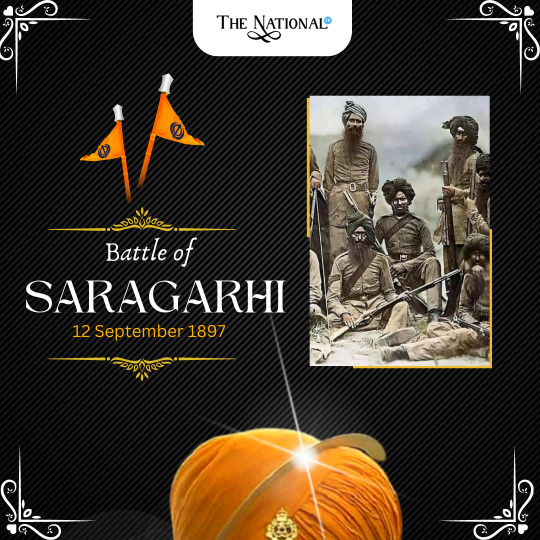
Bettle Saragarhi The Legendary Battle of the 21 Brave Soldiers
On September 12, 1897, 21 brave soldiers of the British Indian Army fought against a force of 10,000 Afghan tribesmen at a remote outpost in Saragarhi, located in the North-West Frontier Province, now Khyber Pakhtunkhwa, Pakistan. This battle, also known as the Battle of Saragarhi, is regarded as one of the greatest last stands in military history.
#saragarhi#sikhhistory#sikh community#khalsa#gurugovind singh#india#afgan#saragarhi battel#hiistory#army#soldier
0 notes
Text
DAY 5926
Jalsa, Mumbai May 9/10, 2024 Thu/Fri 12:22 AM
Birthday Greetings for May 10th , 2024
Saddened to hear the news of the passing away of Shri Ratan Lal Bhutoria , Father of our dear Ef Rohit Kumar Bhutoria .. Rohit's Father met with a road accident this morning and unfortunately could not survive .. as informed by Ef Sanjay Patodiya .. 😔🙏🏻 .. deeply shocked and grieved .. our very sincerest condolences to you , Rohit .. we hold your hand .. be strong .. the whole Ef Family with you .. in prayer and support .. 🙏🏻
..
Hard to put anything after this 💔 .. but the occasion for it's greatness I think it deserves a mention .. 🙏🏻
..
A bit of historic ”gyaan” today .. 🙏🏻
:
10 May In Indian History :
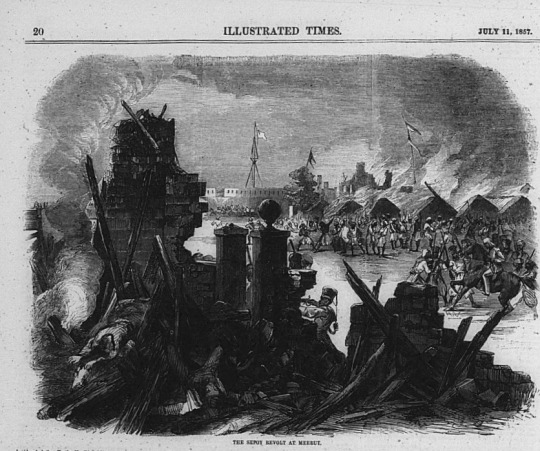
.. 10th May 1857 .. the great Indian rebellion .. the 1st war of independence against the British at Meerut .. the rebellion began in the form of a mutiny of sepoys of the East India Company's army in the garrison town of Meerut ..
Meerut is situated between the holy rivers Ganga and Yamuna ..
Thanks to its geographical importance, the fertile Ganga-Yamuna doab had been an important centre of human activities since the very early times of Vedic Civilisation.
From the medieval period onwards, the proximity of this city to Indraprastha (present day Delhi) helped it play an important role in the affairs of India.
With the capture of power by the British, Meerut became a major military centre. The aggrieved Indian soldiers of the British Army began their fight against the imperial powers in this soil on 10th May, 1857. They captured the control of the city in one day and marched to Red Fort in Delhi, which was considered to be the symbol of control over the whole of India. On their way, they were joined by the common people who shouted patriotic war cries. By the next morning, Red Fort had fallen into the hand of the freedom fighters.
..
Few pictures of India from 1857 ..
Lucknow .. 1857 ..
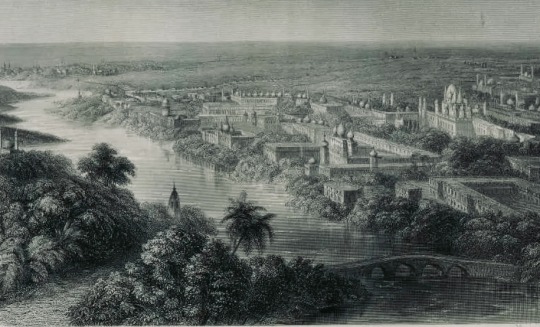
Calcutta .. 1853 ..

Taj Mahal .. Agra .. 1857 ..
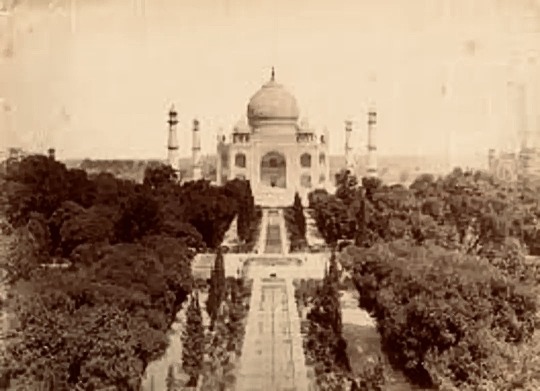
Jantar Mantar near Delhi .. 1858 ..
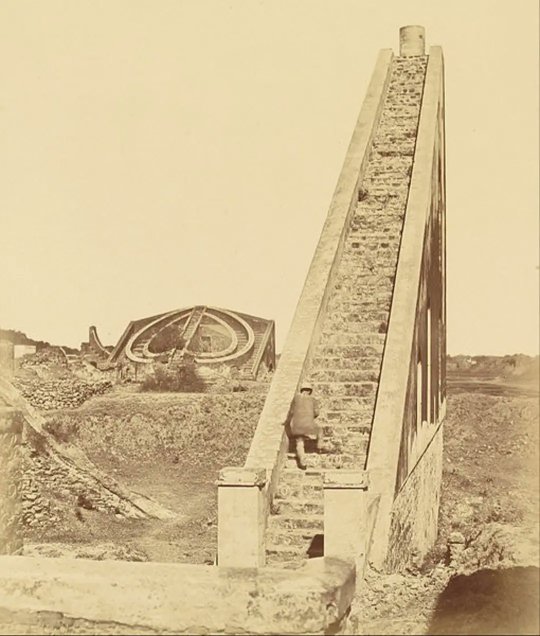
James Outram's Camp at Alumbagh, Lucknow .. It was occupied by Outram and his 4000 Soldiers After the 1857 Mutiny ..

Humayun's Tomb in Delhi .. 1858 ..
See how the change has taken place .. this is the same location where we shot the song from UUNCHAI, the film of Sooraj Barjatya, pictures of which had been put up here at the Blog
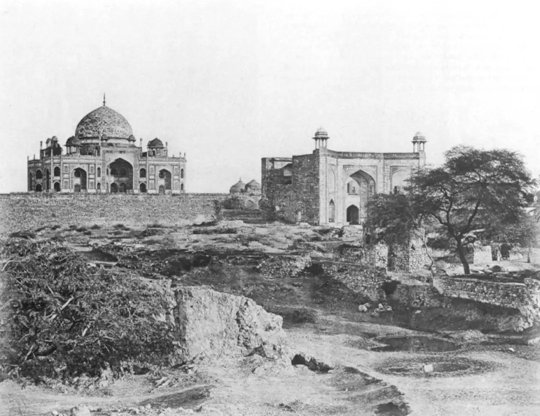
A Sikh cavalry .. Illustrated Times .. 1857 ..
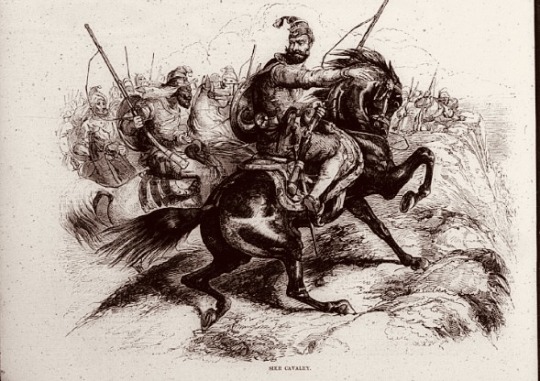
..
Jai Hind .. 🇮🇳🫡🕉️🙏🏻
Love .. ❤️🙏🏻
It has been a bit of a history lesson .. and after which it would be too severe to write anymore .. but simply to say , that the time at the Studio Saptaswar was visited after many an hour and days .. and the sonorous sounds for an upcoming film of Abhishek .. and of my own Section 84 , was I felt , in keeping with the moment and the story and the emotion ..
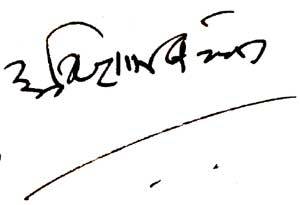
Amitabh Bachchan
100 notes
·
View notes
Text
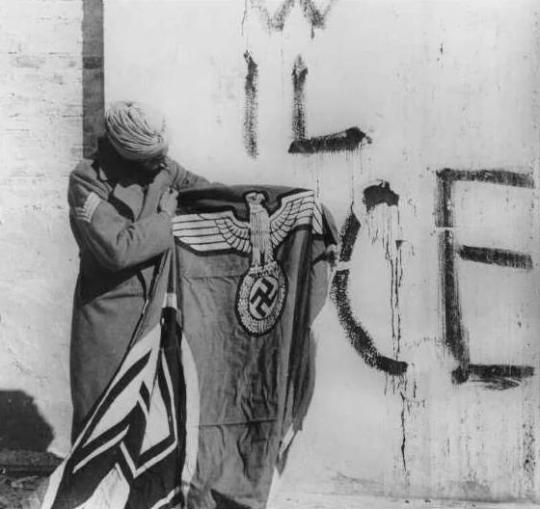
Sikh soldier of the Indian Red Eagle division showing a captured German flag after taking Monte Cassino, Italy. May, 1944
60 notes
·
View notes
Text

“Many years ago,” began a story in a Singapore-based newspaper in 1899, “it used to be customary to transport convicts from India to this Colony.” That article profiled a courthouse scene of fisticuffs between two old men. According to the newspaper, these two ex-convicts opted “to settle their slight differences” with violence, resulting in the “junior” of the pair having “both his arms broken.” [...] Amused by the scene, the writer cast these men as relics from another time.
Convicts from South Asia were once a conspicuous presence in Southeast Asia, their handiwork visible everywhere, particularly in the built environment of Singapore.
In the twenty-first century, public acknowledgment of their achievements barely exists, elided by many in the Indian community who would rather not trace their origins to convict ancestors and erased by postcolonial governments that would rather not see their shining cities and states shaped by coerced labor. As for the roads, bridges, and buildings constructed by “servants” of the East India Company, as Indian convicts understood themselves, many have been leveled to make room for new monuments.
Convicts had a significant role in forging empires across the world. Penal transportation was a key strategy of British imperial rule, notably in the case of Australia, from the eighteenth century onward. However, the British also established penal settlements in Southeast Asia where they sent women and men from South Asia convicted of heinous crimes, including political offenses. [...]
Empire of Convicts: Indian Penal Labor in Colonial Southeast Asia tells the stories of convicts journeying across kala pani (black waters) and making their homes in Bengkulu, Penang, and Singapore, where they served extended sentences.
Despite finding themselves in novel and precarious situations, many prisoners exercised considerable agency and resisted colonial authorities, in some cases even becoming “their own warders.” Such are the tales of Fateh Khan of Banaras who emerged as the sahib and leader of the Indian convicts and soldiers in Bengkulu or Jallia who escaped from Penang and made his way back home to Gujarat or the many women and men who labored in Singapore for decades and never returned to India.
Political prisoners from South Asia lived alongside other convicts in the insular prisons of Southeast Asia. My book’s cover features the belongings of the Sikh rebel, Bhai Maharaj Singh, who fought the British in India and was held captive in Singapore in the early 1850s. These objects -- a conch shell, a finger ring, a knife, two steel quoits, a sewing needle and thread, and a religious text -- attest to persons and things dispersed across an Indian Ocean world. Empire of Convicts serves as a counterpart to well-known stories of law, crime, punishment, and prisons, and to an ongoing story of prisoners, particularly in the United States, being used for their labor and exploited by racist structures in liberal democracies.
---
All text above by: Anand A. Yang. “Forgotten Histories of Indian Convicts in Colonial Southeast Asia.” UC Press Blog (published by University of California Press). 22 January 2021. [Some paragraph breaks added by me. Image shows a portion of the cover of Yang’s book.]
105 notes
·
View notes
Text
The war would be over by Christmas. That was what everyone said, when Britain, France, and Germany went to war in August 1914. Maybe that’s why, by the start of December, with no victory in sight, there was a pause in the fighting along parts of the Western Front stretching from Belgium through France. And maybe that’s why, when singing broke out in the trenches on Christmas Eve, soldiers on both sides decided to risk a walk up into no man’s land and even, in one recorded case, a soccer kickabout. Troops on both sides sang “Silent Night” as snow began to fall.
The truce was never formally declared by any power. Although Pope Benedict XV had called for a cease-fire earlier in the month, it had been rejected by all parties. France and Belgium had little appetite for a truce with an invading army. And in a war between global, multiethnic empires, there was little agreement about the timing or the meaning of a Christmas truce for soldiers who were Muslim, Sikh, Jewish, Hindu, or Shinto. Even for Eastern Orthodox troops on the Eastern Front, Christmas would be a few weeks later.
Instead, there were spontaneous truces along the front lines. While both sides engaged in singing, many Germans had reportedly decided not to take any action from Dec. 25 to 27. In France, near Laventie, German soldiers started putting up Christmas trees along their trenches on the 23rd and their officers requested a meeting with their British counterparts. In their book, Christmas Truce, Malcolm Brown and Shirley Seaton report that the German officers “proposed a private truce for Christmas Eve and Christmas Day” that the British officers accepted. Similar informal arrangements were made up and down the front lines, with different results in different sectors.
The informal nature of the truce meant that not everyone participated. This is partly why the truce has now attained a mythical quality—many who were on the front did not experience it and so doubted that it had taken place. Even where peace seemed to prevail, officers worried that “the truce will probably go on until someone is foolish enough to let off his rifle.”
Across the Western Front, the Christmas truces came to an end at different points. By the 27th, rain had resumed and the soldiers were once again knee-deep in mud. Along some parts of the line, fighting resumed in January. But one soldier wrote home that part of the front near Ploegsteert in Flanders didn’t really see any action from the Christmas Truce until mid-March. The Battle of Neuve Chapelle in March 1915 definitively shattered the peace. Attempts for an Easter truce in early April were largely ignored.
The Christmas Truce that took place in the first December of World War I has transcended historical curiosity to become a feature of popular memory. Pop songs, TV shows, and even ads have all made reference to the events of December 1914. Why has it adhered in this way? What has it come to symbolize, more than 100 years on?
Regular truces were a typical part of pre-modern warfare. Staged battles left time for clearing the field, burying the dead, and regrouping. Informal encounters between soldiers did not always lead to fighting, and impromptu Christmas truces occurred in the U.S. Civil War and the South African War in 1899. In a way, the Christmas Truce appeals because it seems to point to the last moment of an older form of warfare. Given the horrors of the war to come, it seems poignant in its innocence.
The popularity of the Christmas Truce of 1914—even though it was not repeated for the rest of World War I—was not just as a token of nostalgia, though. It was also responsible for creating something new: the idea that there should be a Christmas truce.
One of the enduring legacies of World War I was the shift from an approach to humanitarian principles and human rights that was “episodic, empathic, and voluntary” to, as one scholar put it, a “permanent, professionalized, and bureaucratic” responsibility of states operating in a transnational network. Alongside these developments in humanitarian organizing, truces moved out of the realm of improvised, informal agreements between soldiers. Instead, they were called for and negotiated by states and transnational peace organizations. And they did so with the Christmas Truce of 1914 as a model.
For instance, in 1965, in the midst of the escalating Vietnam War, the Viet Cong proposed a Christmas cease-fire. Meant to parallel the cease-fire that had accompanied the Vietnamese Lunar New Year celebrations earlier in the year, it was embraced back at home and internationally by the peace movement. The truce was arranged with some skepticism on the ground. Even more so given the previous year’s Christmas Eve bombing of a hotel where many U.S. officers were staying. The truce was agreed to and formally communicated to both sides.
A newspaper report from the cease-fire explicitly echoed the coverage of the 1914 truce. “It was quiet—the guns of war were stilled by a Christmas truce for the first time in almost a year,” the paper reported. “And from the top of the hill, the words of ‘silent Night’ wafted down” as the men rested their rifles on their foxholes and contemplated what the Viet Cong forces made of the song.
At the end of the 48-hour pause, both sides accused each other of violating the cease-fire. Radio Hanoi reported that “in complete disregard for their proclaimed Christmas truce, the U.S. imperialists Sunday sent many flights of aircraft.” The U.S. argued that these were reconnaissance flights, rather than bombing raids, and that the “Communists had launched at lease 60 small attacks.”
What the soldiers of World War I accidentally stumbled on was a new form of propaganda. Christmas cease-fires build morale among the troops, but also more widely. A key feature in the rhetoric of war is convincing your side that the opposing side is not just wrong, but bad. Truces and cease-fires play into this: The side proposing the cease-fire paints itself as humane. Violations of the cease-fire are fodder for arguments that the violators are inhumane.
In foreign policy, the Christmas Truce endured because it turned out to be good for both international and domestic public relations. But as a result of this realization, Christmas cease-fires also became more top-down. While the soldiers were responsible for organizing spontaneous truces along the front lines in 1914, the Christmas truces of the Vietnam War and other more recent conflicts have been ordered by leaders, often in response to international pressure. In Vietnam, despite suspicion among U.S. troops that the Viet Cong “took advantage of the truce” to rearm and resupply its forces in the south, the Christmas truce was often implemented. While this provided respite and a chance for point-scoring in the media, some U.S. soldiers were left asking, “What good would it do?”
And they asked that with good reason. Christmas—and other religious holidays—have been just as likely to mark the beginning of a campaign, taking advantage of the enemy’s hope for some respite. George Washington crossed the Delaware River on Christmas 1776, surprising the British-allied Hessian troops in Trenton. During the Tet Offensive in the Vietnam War, the Viet Cong took advantage of the Lunar New Year in 1968 to attack while many of South Vietnam’s soldiers were on holiday leave. And then-U.S. President Richard Nixon broke the expected Christmas Truce tradition in 1972 when the U.S. launched its largest B-52 raid on North Vietnam in the course of the war. The Yom Kippur War in Israel began on the Jewish holiday in 1973. Operation Ramadan in the Iran-Iraq War launched to coincide with the holy month in 1982.
This explains the unease of the leadership in December 1914. In Laventie, one group of British soldiers was about to withdraw from the trenches on the 26th when a German deserter, taking advantage of the truce, crossed to warn them that an attack was imminent. The British soldiers fired artillery at the German trenches and then lay in wait for the attack. But it never came. And the Germans, put on alert by the artillery fire, similarly had spent the night in anticipation of a British attack.
In fact, while the 1914 Christmas Truce saw soldiers sharing tobacco and wine, Christmas puddings and songs at scattered locations along the trenches in Belgium and France, the Germans dropped their first aerial bomb on Britain, at Dover on Christmas Eve. On Christmas Day, the British used seaplanes to attack the Imperial German Navy, stationed in the harbor of Cuxhaven.
The 1914 Christmas Truce in particular has been read in popular culture as a moment when soldiers rejected their officers’ orders and rejected the nationalist propaganda that they had been exposed to, which demonized their opponents. The Christmas Truce appeals to the idea that ordinary people would get along if only they weren’t ordered to fight each other by their governments. In 1914, soldiers ignored officers and took risks to make human connections with people they were supposed to hate.
Christmas truces have subsequently become a regular prop in international diplomacy. In conflicts ranging from the Philippines to Colombia, Sudan to Ukraine, it’s hard not to see the Christmas Truce as having retained its mythical status precisely because of its usefulness as propaganda. Perhaps it would be better to remember the Christmas Truce as one poem concluded in January 1915: “God speed the time when every day/Shall be as Christmas Day!”
21 notes
·
View notes
Text


Ladies and gentlemen, eighty years ago today, Field Marshal Montgomery – Commander in Chief of the Allied Ground Forces – wrote in his message to all soldiers on the eve of D-Day:
‘To us is given the honour of striking a blow for freedom, which will live in history; and, in the better days that lie ahead, men will speak with pride of our doings’.
Today, we come together to honour those nearly one hundred and sixty thousand British, Commonwealth and Allied troops who, on 5th June 1944, assembled here and along these shores to embark on the mission, which would strike that blow for freedom and be recorded as the greatest amphibious operation in history.
Those who gathered here in Portsmouth would never forget the sight. It was by far the largest military fleet the world has ever known.
Yet all knew that both victory and failure were possible, and none could know their fate.
Aircrew flying overhead, sailors manning warships; or troops in assault craft battering their way through the stormy swell to the shore; whether dropping by parachute, landing in a wooden glider, or taking that terrible leap of faith onto the beaches... all must have questioned whether they would survive and how they would respond when faced with such mortal danger.
The poet Keith Douglas, who was killed in action three days later, wrote of the embarkation:
"Actors waiting in the wings of Europe, we already watch the lights on the stage and listen to the colossal overture begin.
For us entering at the height of the din, it will be hard to hear our thoughts, hard to gauge how much our conduct owes to fear or fury."
At this remove, eight decades later, it is a near impossible task to imagine the emotion of that day:
The pride of being part of so great an enterprise, the anxiety of in some way not coming up to scratch, and the fear of that day being their last.
I recently myself spoke to veterans who, to this day, remember with such heartbreaking clarity the sight of those many soldiers lying on the beach, who drowned before they could even engage in combat.
The stories of courage, resilience and solidarity which we have heard today, and throughout our lives, cannot fail to move us, to inspire us, and to remind us of what we owe to that great wartime generation – now, tragically, dwindling to so few.
It is our privilege to hear their testimony, but our role is not purely passive:
It is our duty to ensure that we, and future generations, do not forget their service and their sacrifice in replacing tyranny with freedom.
Our rights, and the liberty won at such terrible cost, bring with them responsibilities to others in the exercise of that liberty.
The Allied actions of that day ensured the forces of freedom secured, first, a toehold in Normandy, then liberated France, and ultimately, the whole of Europe from the stranglehold of a brutal totalitarianism.
And as we remember, with humility, pride and gratitude, let us never forget that the soldiers who fought in the campaign launched from this place came from thirty nations, from across the United Kingdom, the Commonwealth and Allied countries; while elsewhere in Europe, Allied forces continued to make vital progress in their successful Italian campaign; and while halfway around the world, at that same moment, the critical battles of Imphal and Kohima raged on in what was then Burma.
The 1944 Victoria Cross roll of honour includes Sikh, Muslim and Hindu soldiers – a reminder that events that year shaped our world then, and the society we share today.
While it was the frontline troops who faced the greatest personal dangers, the privations and sacrifices of war were endured by so many more.
The Allied victory was a truly collective effort, born of the fortitude and hard work of those who remained on the Home Front, toiling in factories, under our land in the mines, out in the fields, or working in secret – men and women alike.
Their collective industry, ingenuity and commitment helped our soldiers, sailors and airmen to prevail.
So, as we give thanks for all those who gave so much to win the victory, whose fruits we still enjoy to this day, let us, once again, commit ourselves always to remember, cherish and honour those who served that day and to live up to the freedom they died for by balancing rights with civic responsibilities to our country. For we are all, eternally, in their debt.
Source: Royal UK
youtube
A speech by The King at the UK's National Commemorative Event in Portsmouth to mark #DDay80
5 June 2024
The King addresses veterans, serving forces and and members of the public at the UK's National Commemorative Event in Portsmouth to mark the 80th anniversary of the D-Day Landings.
#Youtube#D-Day#D-Day 1944#UK National Commemorative Event#Portsmouth#5 June 1944#D-Day Landings#Field Marshal Montgomery#Allied Ground Forces#Keith Douglas#1944 Victoria Cross#Allied Forces#World War II#war heroes#war veterans#King Charles III#Queen Camilla#British Royal Family
9 notes
·
View notes
Photo

Sikh Sarbloh Kara Smooth Design Singh Kaur Khalsa Kada Bangle Kakaar 5Ks New DD3 Sikh Sarbloh CHAKRI Kara Smooth Design Singh Kaur Khalsa Kada Bangle Kakaar 5Ks New. Kara Ref: DD3 Width is approx 8.3mm Thickness from inner side of Chakri to the edge of Chakri is approx. 12.3mm Weight Approx 110-155g (Variable due to size) Handmade design - therefore each kara is a Unique design Please note these Pure Sarbloh Kara are very hard to find and is a customised design exclusive to OnlineKaraStore These karas are from the Holy City of Amritsar (Golden Temple/Darbar Sahib). KARA Size is the internal diameter of Karas measured in CMs. There may be little bit rust present which is seen commonly in all SARBLOH KARAS due to purity of the metal/wrought iron. Cuts, dings and scruff Mark's may present as these kara are hand made and transported in Jumble in Jute bags. However, our kara will be near to perfection as we get these manufactured on demand and use bubble wraps to transport these. Please read below more Information about Sikh Kara: A kara (Punjabi: ਕੜਾ (Gurmukhi), کڑا (Shahmukhi) कड़ा (Devanagari)), is a steel or iron (sarb loh) bracelet, worn by all initiated Sikhs. It is one of the five kakars or 5Ks — external articles of faith — that identify a Sikh as dedicated to their religious order. The kara was instituted by the tenth Sikh guru Gobind Singh at the Baisakhi Amrit Sanskar in 1699. Guru Gobind Singh Ji explained: He does not recognise anyone else except me, not even the bestowal of charities, performance of merciful acts, austerities and restraint on pilgrim-stations; the perfect light of the Lord illuminates his heart, then consider him as the immaculate Khalsa. The kara is to constantly remind the Sikh disciple to do God's work, a constant reminder of the Sikh's mission on this earth and that he or she must carry out righteous and true deeds and actions, keeping with the advice given by the Guru. The Kara is a symbol of unbreakable attachment and commitment to God. It is in the shape of a circle which has no beginning and no end, like the eternal nature of God. It is also a symbol of the Sikh brotherhood. As the Sikhs' holy text the Guru Granth Sahib says "In the tenth month, you were made into a human being, O my merchant friend, and you were given your allotted time to perform good deeds." Similarly, Bhagat Kabir reminds the Sikh to always keep one's consciousness with God: "With your hands and feet, do all your work, but let your consciousness remain with the Immaculate Lord." The basic kara is a simple unadorned steel bracelet, but other forms exist. It was historically used like a knuckle-dusterfor hand-to-hand combat. Battlefield variations include kara with spikes or sharp edges. Sikh soldiers of the British Indian army would settle disputes by competing in a form of boxing known as loh-musti (lit. iron fist) with a kara on one hand. PLEASE NOTE: Please measure/check size of your kara/bracelet first while ordering to avoid any hassle or posting it back to us and paying extra for p&p for exchange and swap of karas with other desired sizes. There will be charge of £5 p&p towards exchange/swap of Kara for any size issues for UK buyers and £12 p&p for international buyers that needs to be paid by PayPal in advance or interested buyer can send us pa repaid self addressed envelope for any exchange/swap along with the original item in its original packaging and buyer should also return us the gift item/bags sent along with the item for appreciation of purchase. We may post back gift items/bags along with the swapped item. P.S. Colour of item may slightly vary due to camera flash and light conditions. Some Karas may have negligible small black grinding mark on the kara joint. This is always seen on all karas as most of the Kara making/shaping work is done by hands. However, this do not affect the quality/look of Kara. #Kara #KaraforLife #SikhKara #SarblohKara #Sarbloh #5Ks #SinghKara #SikhBracelet #KhalsaKada #Kada #SinghisKing Brilliant finish and very decorative. Ideal gift item for loved ones on any Occasion. Please follow us on Facebook, Instagram and Twitter @OnlineSikhStore #OnlineSikhStore Free Royal Mail Postage in UK. Postage discounts will be given to International buyers for multi-buys. Any questions please do not hesitate to contact us. P.S. Colour of item may slightly vary due to camera flash and light conditions. Size is approximate it and may differ by few mm from Kara to Kara or because of Digital Vernier Calliper errors. There may be rust present or marks of rust present as rust is natural characteristic of pure iron/sarbloh. These kara do require cleaning with Sharp Sand or Brasso Polish. These are usually treated with coconut oil to maintain shine after cleaning.
#round chakri kada#Sarbloh bangle#sikh sikhi sikhism#punjabi steel bangle#panjabi karra kaday#singh kaur khalsa#pure iron loha kada#stainless steel kara#silver bangle#gatka martial arts#smooth chakri chakra#warrior odha yudh#brave soldier saint
3 notes
·
View notes
Text
*Can you hear a pin drop?*
*What is the meaning of pin drop silence?*
*Following are some instances when silence could speak louder than voice.*
*Take 1:*
*Field Marshal Sam Bahadur Maneckshaw once started addressing a public meeting at Ahmedabad in English.*
*The crowd started chanting,"Speak in Gujarati.*
*We will hear you only if you speak in Gujarati."*
*Field Marshal Sam Bahadur Maneckshaw stopped.*
*Swept the audience with a hard stare and replied,*
*"Friends, I have fought many a battle in my long career.*
*I have learned Punjabi from men of the Sikh Regiment;*
*Marathi from the Maratha Regiment;*
*Tamil from the men of the Madras Sappers;*
*Bengali from the men of the Bengal Sappers,*
*Hindi from the Bihar Regiment;and*
*Even Nepali from the Gurkha Regiment.*
*Unfortunately there was no soldier from Gujarat from whom I could have learned Gujarati."...*
*You could have heard a pin drop*
*Take 2:*
*Robert Whiting,*
*an elderly US gentleman of 83, arrived in Paris by plane.*
*At French Customs, he took a few minutes to locate his passport in his carry on.*
*"You have been to France before, Monsieur ?", the Customs officer asked sarcastically.*
*Mr. Whiting admitted that he had been to France previously.*
*"Then you should know enough to have your passport ready."*
*The American said,*
*"The last time I was here,*
*I didn't have to show it."*
*"Impossible.*
*Americans always have to show their passports on arrival in France !", the Customs officer sneered.*
*The American senior gave the Frenchman a long, hard look.*
*Then he quietly explained*
*"Well, when I came ashore at Omaha Beach,*
*at 4:40am, on D-Day in 1944, to help liberate your country, I couldn't find a single Frenchman to show a passport to.... "*
*You could have heard a pin drop*
*Take 3:*
*Soon after getting freedom from British rule in 1947, the de-facto prime minister of India, Jawahar Lal Nehru called a meeting of senior Army Officers to select the first General of the Indian army.*
*Nehru proposed, "I think we should appoint a British officer as a General of The Indian Army, as we don't have enough experience to lead the same."*
*Having learned under the British, only to serve and rarely to lead, all the civilians and men in uniform present nodded their heads in agreement.*
*However one senior officer,Nathu Singh Rathore, asked for permission to speak.*
*Nehru was a bit taken aback by the independent streak of the officer, though, he asked him to speak freely.*
*Rathore said, "You see, sir, we don't have enough experience to lead a nation too, so shouldn't we appoint a British person as the first Prime Minister of India?"*
*You could hear a pin drop.*
*After a pregnant pause,* *Nehru asked Rathore,*
*"Are you ready to be the first General of The Indian Army?"..*
*Rathore declined the offer saying "Sir, we have a very talented army officer, my senior, Gen. Cariappa, who is the most deserving among us."*
*This is how the brilliant Gen. Cariappa became the first General and Rathore the first ever Lt. General of the Indian Army.*
*(Many thanks to Lt. Gen Niranjan Malik PVSM (Retd) for this article)*
👌👌👌🙏🙏
*Worth reading ..*
*This article thrills to read even after reading n times!*
5 notes
·
View notes
Text
Sri Harmandir Sahib
If you won two free plane tickets, where would you go?
No hesitation. I would go there again in a heart beat. It is truly the most beautiful place on this earth. 🙏🏻🙏🏻
#10 Days Of Terror#40 Years No Justice#Beauty#dailyprompt#dailyprompt-2011#Guru Nanak Ji#Healing#Ik Onkar#Nishan Sahib#Sant Soldiers#Seva#Sikh#Sikhi#Sri Harmandir Sahib Ji#Trust#Waheguru Ji
0 notes
Text
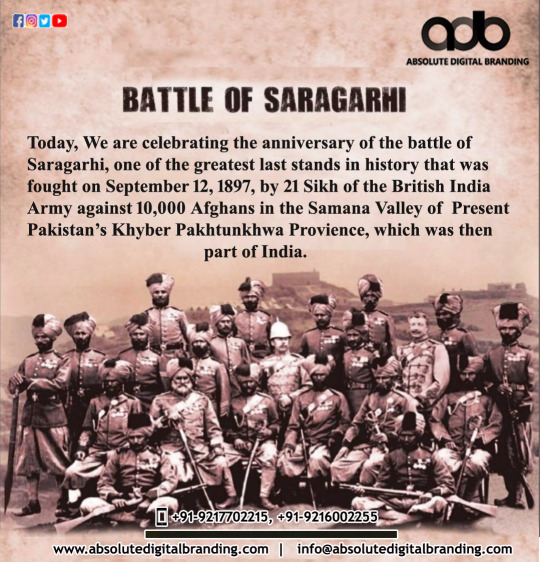
The Battle of Saragarhi took place on September 12, 1897, when 21 Sikh soldiers of the 36 Sikh Regiment of the British Indian army laid their lives defending the Saragarhi outpost in Waziristan. Saragarhi served as a communication relay post between Fort Lockhart and Fort Gulistan. #battleofsaragarhi #Marktingstrategy #SEObrandingagency #SEO #PPC #SMO #SMM #SeoCompany #digitalmarketingcompany #socialmediamarketingcompany #absolutedigitalbranding #searchengineoptimization #advertisingagencyinmohali #facebook #twitter #marketingonline #internetmarketing #follow #digitalagency #marketingagency #motivation #digitalmarketingtips #onlinebusiness #websitedesign #marketingonline #brand #ABSOLUTEDIGITALBRANDING #BEST #PUBLIC #RELATION #AGENCY #IN #CHANDIGARH #MOHALI #PUNJAB #NORTH #INDIA #onlinebranding #branding360degree #SEObrandingagency #websiteranking #websitetrafic #Digitalmarketing #OnlineAdvertising #instagrammarketing #web #technology #marketingonline #content #instagrammarketing #advertisingagency #web #buildingrelationships #globally #customer #internetbranding-at Absolute digital Branding & Public relations.
#The Battle of Saragarhi took place on September 12#1897#when 21 Sikh soldiers of the 36 Sikh Regiment of the British Indian army laid their lives defending the Saragarhi outpost in Waziristan. Sa#battleofsaragarhi#Marktingstrategy#SEObrandingagency#SEO#PPC#SMO#SMM#SeoCompany#digitalmarketingcompany#socialmediamarketingcompany#absolutedigitalbranding#searchengineoptimization#advertisingagencyinmohali#facebook#twitter#marketingonline#internetmarketing#follow#digitalagency#marketingagency#motivation#digitalmarketingtips#onlinebusiness#websitedesign#brand#ABSOLUTEDIGITALBRANDING#BEST
2 notes
·
View notes
Photo
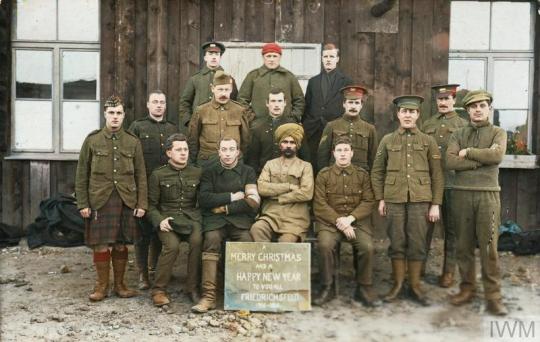
One print postcard of a group prisoners of war at Friedrichsfeld camp. The groups consists of primarily British troops, and a Sikh soldier all in front of a sign saying 'A MERRY CHRISTMAS AND HAPPY NEW YEAR TO YOU ALL FREIDRICHSFELD 1915-1916'.
#WW1#World war one#The great war#The First World War#1918#1917#1916#1915#1914#historical photos#history#world history#military history#military#british#british army#canadian history#canada remembers#archives#Christmas Day#christmas#xmas#the christmas truce
139 notes
·
View notes
Text

“Sikh Soldiers Playing Volleyball, Giza, Egypt” by Margaret Bourke-White, 1940
#photography#black and white#sikhcommunity#soldiers#military#giza#egypt#1940s#volleyball#north africa#africa#20th century#sports
4 notes
·
View notes